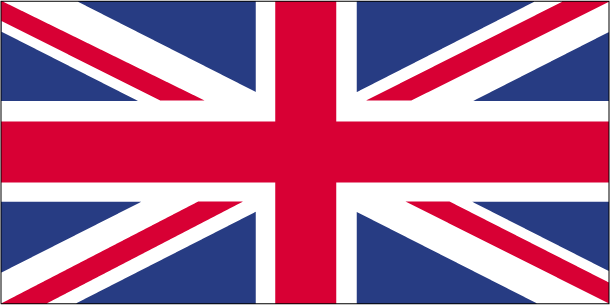What Technology Do Search Engines Use to Crawl Websites?
Crawling is a crucial aspect of SEO. If you’ve ever wondered how search engines discover content to display in their search results, rest assured it’s not done manually by a person picking out articles.
Search engines rely on their own automated bots to crawl websites and index relevant content. But what technology underpins this crawling process, and how do these bots decide which content to index?
In this blog, we’ll explore the technology behind how search engines crawl websites and the criteria their algorithms use to rank web pages.
What is Crawling?
Crawling involves the use of bots by search engines to explore and analyze web pages on the internet. These bots, often referred to as crawlers or spiders, scour the web to find new pages to index.
Indexing
Indexing involves incorporating a web page into a search engine’s database. When you search for specific terms or keywords related to that page, it will appear in the search results.
Ranking
Ranking determines the order in which content appears in search engine results. This is where SEO becomes essential. High-quality, well-optimized content is more likely to appear on the first page of search results, leading to increased visitor rates, higher conversions, and greater exposure for the website.
How Do Search Engines Crawl Websites?
Search engines utilize bots to efficiently crawl websites. This automated method is essential given the sheer volume of new content published daily—approximately 250,000 websites per day. Manual crawling by search engine employees would be impractical and inefficient.
By leveraging advanced crawling technology, search engines can keep their indexes up-to-date, ensuring users find the most relevant and recent information quickly and easily.
What Do Bots Look For When Crawling Websites?
When bots crawl websites, their main job isn’t to rank content—that’s up to the search engine’s algorithms. Instead, they focus on adding new web pages to their database and ensuring that each page is correctly indexed. Essentially, search engines want to direct users to the most relevant content based on their search terms and keywords.
Here are some key factors that crawlers examine:
- Media elements like images, videos, and audio.
- Relevant keywords and key phrases.
- The freshness of the content, including recent updates.
- Engagement metrics such as site visits and user behavior.
What Is a Search Engine Index?
A search engine index is like a vast library of all the content that a search engine has gathered by crawling the web. It’s essentially a huge database that contains all the websites and their pages that the search engine bots have indexed.
How Do Search Engine Crawlers Influence Content Ranking?
Search engine crawlers themselves don’t directly rank content. Instead, they help search engines decide what gets included in their indexes. Once content is in the index, algorithms determine how it should be ranked. This ranking process considers a range of factors to ensure the most relevant content appears for each user’s query. Here’s a look at some key factors:
Location: Your location can significantly impact the search results you see. For instance, if you search for “average rent 2024,” you’ll likely want to see information relevant to your specific area. Search engines use your location data, if available, to tailor results to reflect local circumstances. This means that searches performed from different locations may yield different results.
Language: Typically, search engines will return results in the language used for the query. However, in some cases, the search engine might prioritize results based on the language of your location. For example, if you’re in a region where a particular language is predominantly spoken, you might see search results in that language even if you used a different one for your query.
Search History: Your search history also plays a role in shaping the results you receive. Search engines consider your previous searches, frequently visited sites, and the terms you’ve used to refine and personalize your results. This helps ensure that the content shown is more relevant to your interests and past behavior.
Device Used: The type of device you use for searching—whether it’s a PC, laptop, or mobile device—can affect the search results you see. Some websites may not be optimized for mobile, which can impact their visibility in search results on mobile devices. Search engines adjust the ranking to provide a better user experience based on the device being used.
Why Crawling Matters for SEO
Crawling plays a crucial role in SEO, even though it’s not directly responsible for ranking web pages. Here’s why it’s so important: For your website to appear in search results on Google or any other search engine, it first needs to be crawled and indexed. Without indexing, your site remains invisible in search results, rendering all your SEO efforts ineffective. To ensure your site gets indexed, you need to provide high-quality, relevant content and avoid duplicate or low-quality material that could be flagged as spam. Engaging an SEO expert to review and refine your site can boost the likelihood of successful indexing.
How to Improve Your Website’s Ranking?
After your site is indexed, you can focus on optimizing it to appeal to search engine algorithms rather than just crawlers. Algorithms consider various factors, including the user’s location, language, and search history. However, there are fundamental SEO practices that influence whether your page ranks well on search engine results pages.
Here’s what you need to achieve strong rankings:
Unique Content: Search engines penalize duplicate content heavily, and it may even prevent your pages from being indexed.
High-Quality Content: Content that is well-written, factual, and informative is essential for SEO success. Poorly crafted content won’t help you secure top rankings in search results.
Backlinks and Off-Site Content: Having reputable backlinks to your site is crucial. High-quality backlinks indicate to search engines that your content is reliable and trustworthy. You can build these through guest posts, blogs, and social media.
Images and Visual Content: Search engines also index images and other visual content. Including high-quality visuals on your web pages can enhance your chances of ranking well.
User-Friendliness: A website filled with errors like broken links, missing images, or outdated information is less likely to rank well. Search engines prefer sites with up-to-date, relevant content, so regularly updating and optimizing your site is a smart strategy.
Final Thoughts
Crawling plays a crucial role in boosting your site’s ranking on Google and other search engines. Though it’s just the beginning of your SEO efforts, having your site indexed marks the start of optimizing and enhancing its visibility. To truly elevate your website’s presence, it’s essential to embrace effective SEO strategies. If you’re not ready for a full-scale SEO audit, consider SEO training in Kerala to gain valuable insights and learn how to optimize your site on your own.
The duration of an SEO audit varies based on your website’s size and the type of audit needed. Generally, the process can take anywhere from 2 to 6 weeks. Websites with extensive text, numerous backlinks, or substantial off-site content may require more time. Don’t let the timeline deter you; SEO is a marathon, not a sprint.
Even if you’re not launching a new SEO strategy, an SEO audit can greatly enhance your website’s user experience. Here’s why regular SEO audits are beneficial for businesses.



